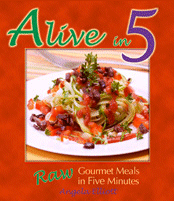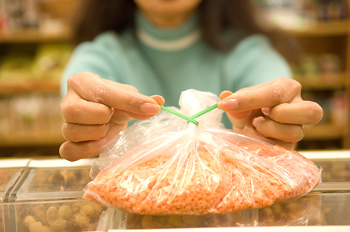“Recession Pounds”: Is the Economy Making You Get Fat?
by www.SixWise.com
With budgets tightening across the nation, health professionals are concerned that the slumping economy is going to impact American’s food bills -- and waistlines. It’s a given that many may reduce the amount they’re spending on food, but experts say this could lead to increased consumption of unhealthy foods.
|

Obesity and unhealthy eating often go hand-in-hand with low incomes because the cheapest foods also tend to be the most fattening.
|
Numerous studies have linked obesity and unhealthy eating to low incomes. This is because when food spending goes down, families often cut back on more expensive items such as fresh fish, fruits, meats, vegetables and whole grains -- in short, healthier foods -- and instead opt for lower priced junk foods high in sugar and refined grains.
"In Seattle we have found that there are fivefold differences in obesity rates depending on the zip code -- the low-income zip codes have a much higher proportion of obese people," Adam Drewnowski, the director of the Nutrition Sciences Program at the University of Washington in Seattle, told Reuters.
Drewnowski also pointed out studies in California that estimated a 10 percent rise in poverty is linked to a 6 percent increase in obesity among adults.
Perhaps mimicking this trend, a Reuters article pointed out that McDonald’s -- king of low-priced meals high in empty calories -- had a “better-than-expected third-quarter profit, helped by a 7 percent jump in global sales.”
"The reality is that when you are income constrained the first area you try to address is having enough calories in your diet. And cheap sources of calories tend to be high in total fats and sugars," said Eileen Kennedy, the dean of the Friedman School of Nutrition Science and Policy at Tufts University outside Boston, in a Reuters article.
As Nobel Prize winning economist Joseph Stiglitz has observed, "America's problem today is not that households consume too little; on the contrary ... it is clear we consume too much."
The problem is that we’re often consuming too many foods that are bad for our health, but cheap, and too little of the pricier items that nourish our bodies.
Fortunately, it’s possible to eat well even on a budget … and we’ve compiled some of the top tips to help you do so here.
10 Ways to Save Money on Groceries and Still Eat Healthy
-
Focus your budget on fresh foods. Meat, dairy and produce are healthy staples that should take up the majority of your food bill. A rule of thumb is to shop the perimeter of the store. This is where you’ll find the basics like produce, meat, dairy and bread.
-
Avoid costly processed foods. Packaged cookies, chips, candy and other junk foods are often pricy. Avoiding them, or making your own home-made variety, can save you plenty.
-
Try a discount grocery store, such as Aldi. Though there selection is smaller than typical grocery stores, Aldi claims their prices are 40 percent to 50 percent lower than most supermarket chains, and 16 percent to 24 percent less than big discounters like Wal-mart and Costco.
-
Consider joining a local food coop. Often, you'll get fresh organic produce, eggs, dairy and grass-fed meets for less than you could ever find them in a store. LocalHarvest.org is a great resource to find a food coop near you.
|
Waste Not, Want Not

The most expensive food is any item you end up throwing away. If you need help figuring out what to do with fresh produce before it goes bad, check out the delicious, and fast, raw food recipes in Alive in 5: Raw Gourmet Meals in Five Minutes.
|
- Visit farmer's markets and ask for the leftover produce. Most sellers will have produce left that they can't sell and would simply go to waste. If you don't mind sorting through produce that may be a few days old and pulling out the "good stuff," you can get high-quality veggies for nothing. Often, farmers will be glad to let you have it so they don't have to haul it away.
- Choose your grains and starches wisely. Healthier versions include beans, brown rice, whole-wheat pasta, and sweet potatoes. Buying in bulk can help you save money.
- Look at the unit prices. This will help you to determine if buying the gigantic can of tomatoes is really cheaper than two smaller ones, or if an item in sale is really a good deal. Sometimes stores display unit prices right on the price tag on the self. If not, you may want to bring a calculator with you.
- Buy generic. Often, generic products contain the same ingredients as name-brand versions at a fraction of the price. They may even have come from the same factory. All you need to do is compare the nutrition information on packages. If the ingredients are the same, the product probably is as well. Do watch out for extra additives or imitation ingredients, though--some generic versions, for instance Parmesan cheese in a carton, may contain lower quality ingredients or more additives than the real thing.
|

Buying in bulk lets you buy exactly how much you need, often at lower prices.
|
- Clip coupons. Investing in a weekly newspaper with a coupon section gives you access to plenty of savings. You can also find coupons online.
- Resist impulse buys. Grocery stores purposely set up enticing displays of expensive cookies, crackers and other packaged foods hoping to coax you into buying something on a whim. Making a list and sticking to it will help you to avoid such impulse buys. And always remember grocery-shopping tip #1: Don’t shop hungry!
Finally, keep in mind that basic, whole foods are always a healthier option to fast-food value meals. Drewnowski recommends families focus on the affordable and healthy foods that saw Americans through the Depression of the 1930s.
His “diet for a new Depression” includes “affordable but nutrient-rich foods such as ground beef, beans, milk, nuts, cheese, carrots, potatoes, canned tomatoes, soups, and rice.”
Recommended Reading
Why are Food Prices so High, Why is There a Global Food Shortage? The Facts
25 Ways to Enjoy Your Life More While Spending Less
Sources
January 9, 2009
ABC News November 24, 2008